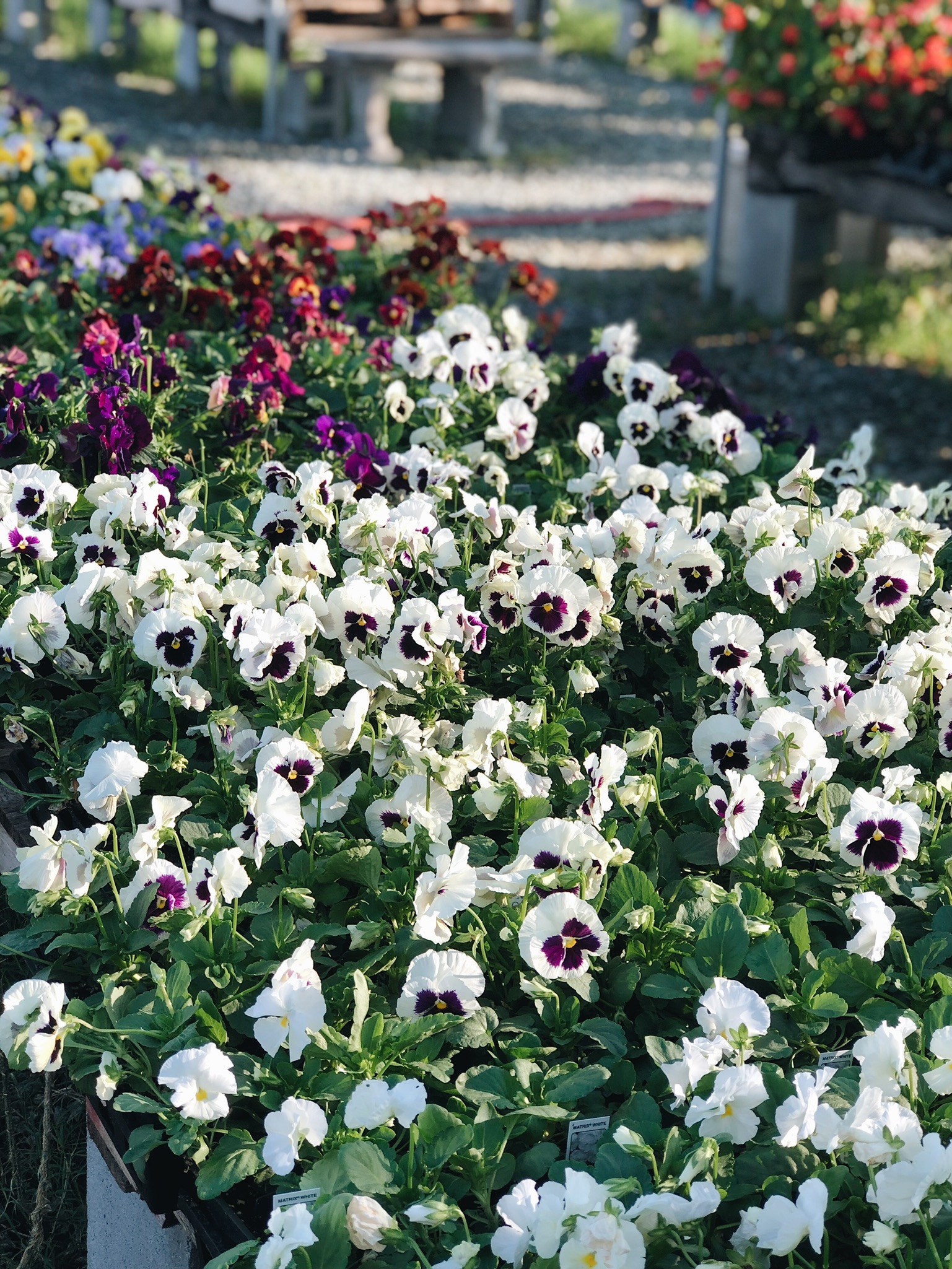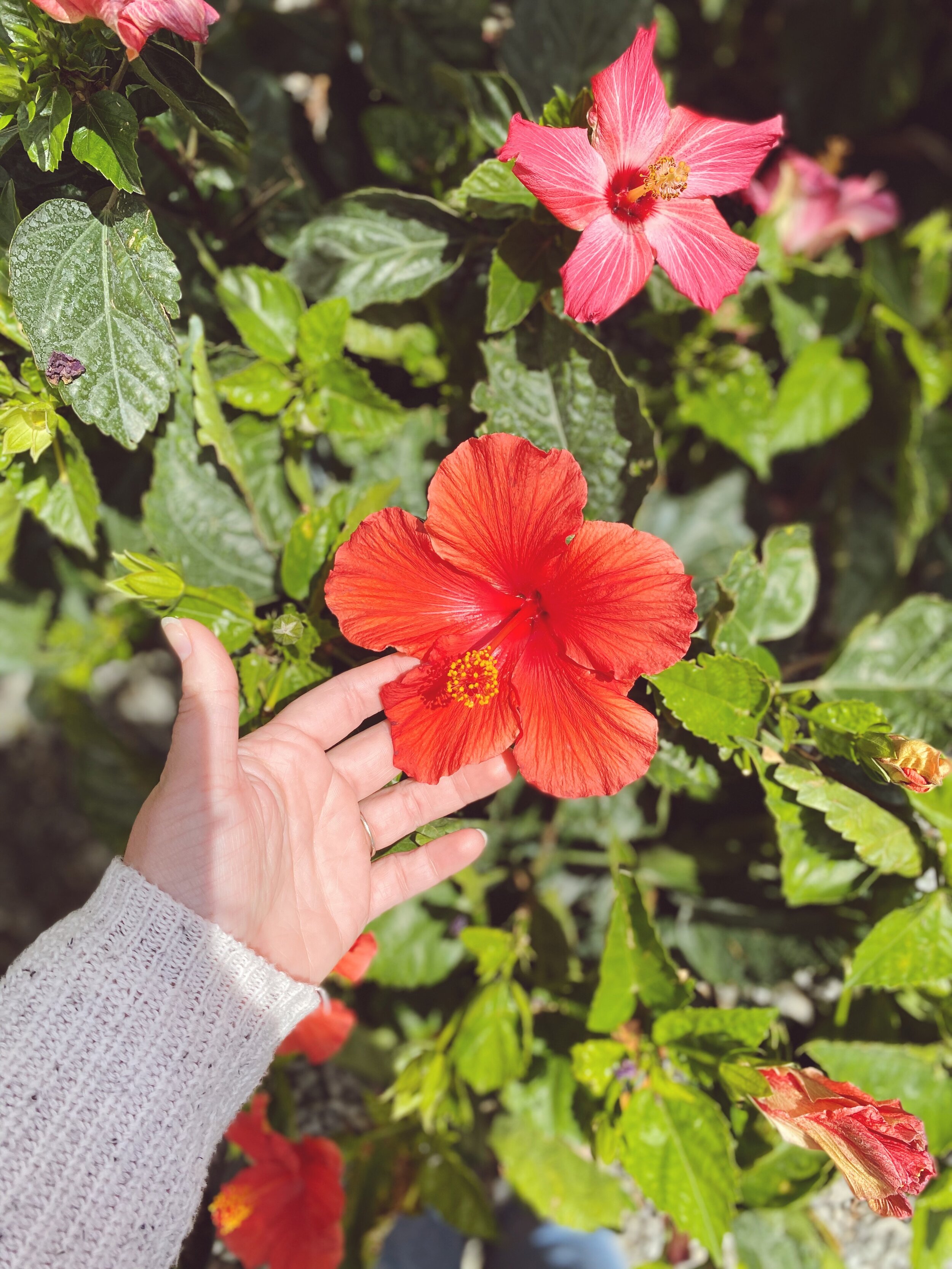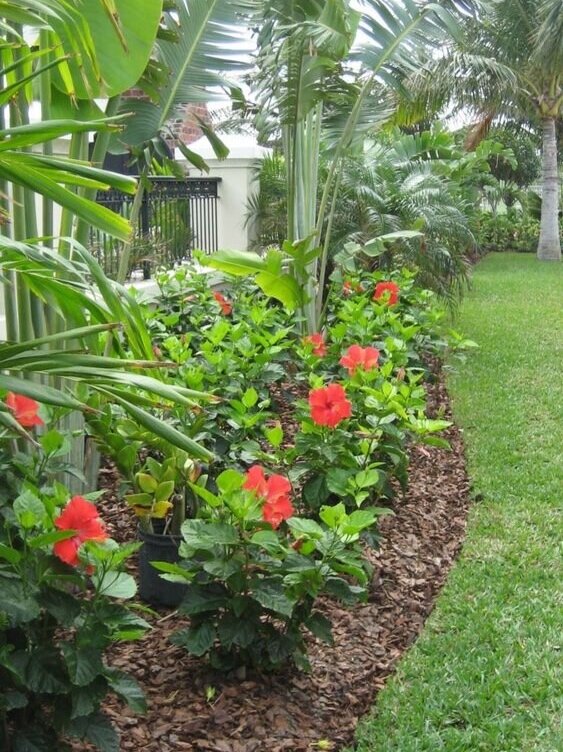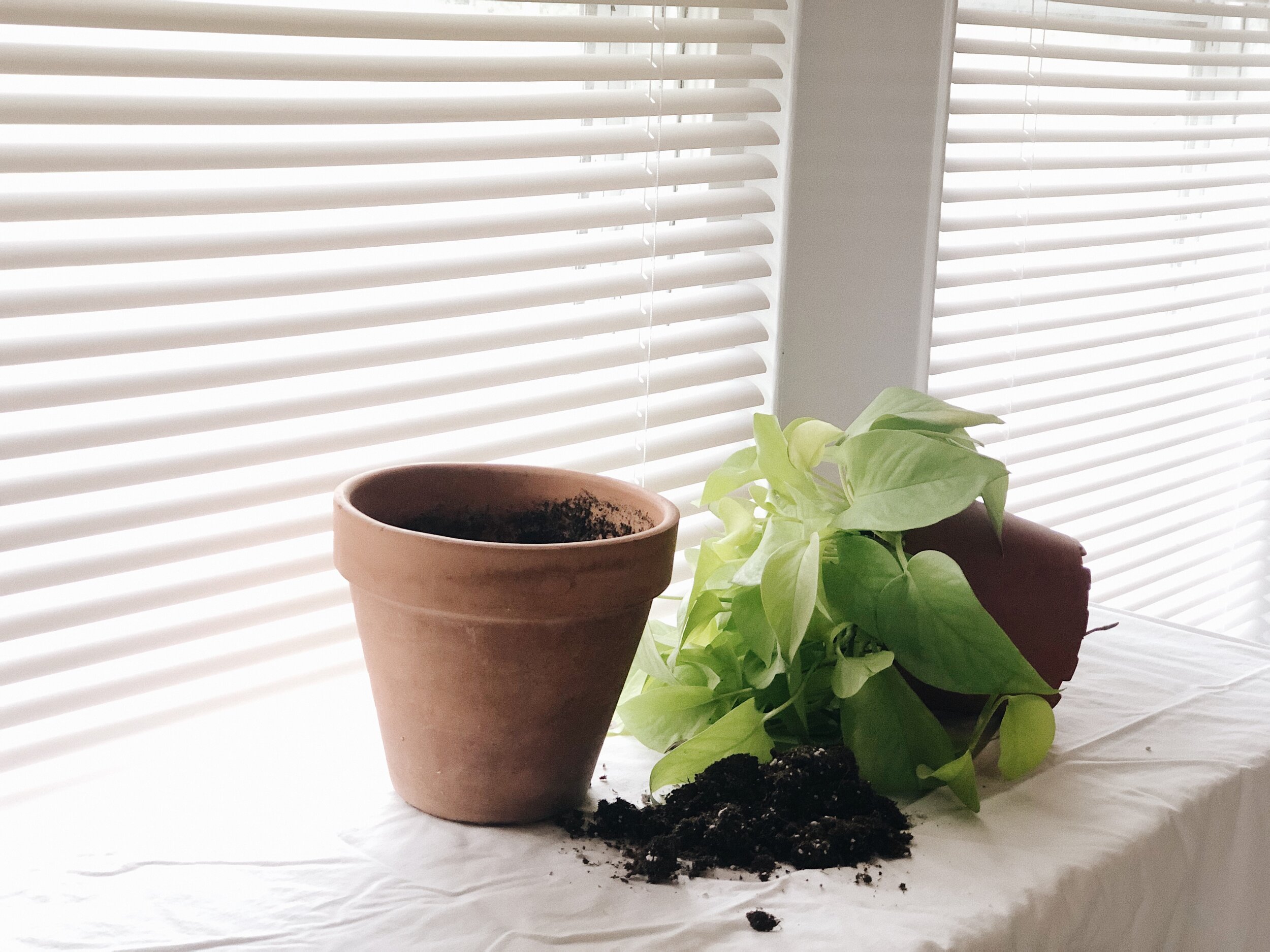
B L O G
How To Care For Pansies
If you’re needing a show-stopping flower that will give your dull looking landscape some color, then you need some gorgeous Pansies. Not only are they easy to care for, but they will brighten up your landscaping view and leave you with beautiful, colorful blooms lasting for Autumn, Winter, and even into Spring!
If you’re needing a show-stopping flower that will give your dull looking landscape some color, then you need some gorgeous Pansies. Not only are they easy to care for, but they will brighten up your landscaping view and leave you with beautiful, colorful blooms lasting for Autumn, Winter, and even into Spring!
Did you know…
that pansies are edible? That’s right! You can eat them in salads (or whatever you desire). To add some beautiful color and a slightly minty flavor to your next recipe, chop them up and make it unique and full of taste.
HOW TO CARE FOR PANSIES
Pansies are beautiful heart-shaped flowers that can add color to your garden beds, ground cover, or beautiful pots. Follow these easy instructions below to keep them thriving all season long:
Where
Plant in full or partial sun and your pansies will thrive.
When and How
Pansies do not like heat, so plant when the temperatures start to cool down. If local to North Carolina, we recommend planting your pansies in the Fall so that you can enjoy them all Autumn, Winter, and Spring! (If planting in beds, place them 7-12 inches apart to allow for room to spread)
Soil
Plant in moist, well draining soil.
Watering
Water only a few times a week because too much can drown them and cause root rot.
Pruning
Remove any dead blooms and cut them back regularly before they become “leggy”. This helps to keep them healthy and full of vibrant blooms.
WE WANT TO KNOW…
have you ever grown pansies? If not, will you get some this year? We have plenty to choose from at all of our locations. Let us know in the comments below. You can also share your Pansy pride with us by tagging us on Facebook or Instagram. We can’t wait to see!
#gardenvalleyfarmersmarket @gardenvalleyfarmersmarket
Thank you so much for joining us here. For more information on what Garden Valley Farmers Market is about, you can visit us here. If you’re wanting to visit with us, come by any of our five North Carolina locations. If you’re wanting to follow along with us, you can do so either on our Facebook, Youtube, or our Instagram. If you’re wanting to earn rewards and be easily connected with us, download our new App. And if you’re wanting to check out our other recipes and blog posts, or are needing more inspiration, follow us on our Pinterest. We’d love to have you join us in our journey of planting better, eating better, and living better.
Much love,
Your Garden Valley Farmers Market Team
Growing the Herb Garden of Your Dreams
Whether you’re adding fresh rosemary to your chicken recipe, or infusing your freshly squeezed lemonade with lavender, we’ve got all of the tips and tricks ready for you to start the herb garden of your DREAMS!
Do you love herbs? Well we do too! Herbs not only add delicious flavor to your favorite recipes, but they also have medicinal, homeopathic properties that your grandmother has been using for ages. Whether you’re adding fresh rosemary to your chicken recipe, or infusing your freshly squeezed lemonade with lavender, we’ve got all of the tips and tricks ready for you to start the herb garden of your dreams.
How to Choose Your Plants
Before choosing your herb garden plants, we recommend you start small, and then work your way up from there. Learn to “get the hang” of growing herbs before committing to a HUGE garden. Because herbs do have different needs than other plants, and while normally easier, they can sometimes take some getting use to.
Here is some info and a few examples of how we use our favorite herbs:
Rosemary: promotes increased concentration and digestion, but also a delicious addition to chicken.
Basil: known for it's use in italian cuisine (especially pesto), rich in antioxidants, and fast growing.
Mints: have many varieties. Can take over a garden, so they are best grown in containers. Also make great teas.
Oregano: is DELICIOUS when infused in honey or butter.
Lavender: is also great for teas. Also fun to make DIY lavender bath salts and candles.
Parsley: makes a fresh addition to salads and meats.
Perennial Options
If you’re wanting some perennial options (a plant that will remain more than one year) specific for our zones in North Carolina (6a-8a), here are some great options for you:
Catmint: cats LOVE this plant (if you don’t like cats, don’t plant this herb).
Also yummy as a tea.
Rosemary: (Rosmarinus Officinalis) looks beautiful and smells amazing. Can be used for not only culinary purposes, but also for decorations at Christmas.
Silver Thyme: has a pretty pink blossom in the summer with slight lemon-scented leaves.
Chives: grow back even bigger every year, and have a pretty purple flower.
Oregano: will return if you cut it back in the fall and cover with mulch.
Choose Your Pots (Or Beds)
If choosing pots, remember that the larger the pot, the larger the crop. For example, mint grows like CRAZY, so if you’re wanting a lot of mint, we recommend planting in a larger pot. If growing in the ground, keep in mind that some plants are more invasive than others, so protect the more delicate plants by keeping the invasive herbs away from them.
Use High Quality Soil
Start your herb garden out on the right foot by choosing a good quality soil. Daddy Pete’s Soil is a great organic option that we carry at our stores in North Carolina, which we mentioned here in this post. And remember, you are most likely going to be eating these herbs, so try and avoid spraying them with a chemical fertilizer. A great alternative to chemical fertilizer would be mixing in some compost to the soil when planting.
Watering Needs
Herbs are not like houseplants or succulents because they need a moderate amount of water every day, depending on the specific herb. And usually the best time to water is in the early morning, which allows the sun to dry the water from the leaves and prevent mold and mildew growth. Be careful not to overwater, as some herbs tend to gravitate toward root rot (like Sage).
Choose Your Location Wisely
Some herbs like a cool, shady spot, and some like a hot, sunny location, so remember to check the tag of your herb before planting. Another tip to keep in mind, in regard to location, is this: keep your herbs easily accessible. For example, you don’t want to be running through a summer rainstorm (or maybe you do) to go and cut the lavender from the garden that you forgot to get earlier that day.
Give It A Haircut… aka a pruning
We like to think of pruning herbs as “giving them haircuts”. If you trim the TOP of your herbs, more will grow back in its place, creating a full and healthier plant. You also want to cut from the top of your herbs, not the bottom. The bottom leaves are the sturdy base to your herb, so don’t cut those gorgeous leaves. And remember to trim often, because some herbs tend to die after blossoming like Cilantro. The leaves age, dry up, and fall off, leaving you with a twig and no leaves, which is sad and disappointing.
Do you enjoy planting herbs and using them in your recipes? If so, what’s your favorite herb and what recipe do you use them in? We’d love to hear about it in the comments below!
Please note: we truly hope you’ll come visit with us, and we would also love to see your gardening photos as well, so tag @gardenvalleyfarmersmarket in your posts, and don’t forget to use the hashtag #gardenvalleyfarmersmarket and show us your herbs!
And lastly, if you find this information helpful, we’d love it if you would support us by sharing with your friends.
Happy Herb Planting!
Thank you so much for joining us here. For more information on what Garden Valley Farmers Market is about, you can visit us here. If you’re wanting to visit with us, come by any of our five North Carolina locations. If you’re wanting to follow along with us, you can do so either on our Facebook, Youtube, or our Instagram. If you’re wanting to earn rewards and be easily connected with us, download our new App. And if you’re wanting to check out our other recipes and blog posts, or are needing more inspiration, follow us on our Pinterest. We’d love to have you join us in our journey of planting better, eating better, and living better.
Much love,
Your Garden Valley Farmers Market Team
Growing Gorgeous Hibiscus
With absolutely gigantic, gorgeous, and beautiful blooms, Hibiscus bushes are the perfect spring, summer, and even fall plant that will leave your landscape bright and full of color. With a variety of bloom colors ranging from yellow to pink, these hardy tropical bushes are perfect for any yard that receives full sun.
With absolutely gigantic, gorgeous, and beautiful blooms, Hibiscus is the perfect spring, summer, and even fall plant that will leave your landscape bright and full of color and depth. With a variety of bloom colors ranging from yellow to pink, these hardy tropical bushes and trees are perfect for any yard that receives full sun.
here’s how to get those gigantic, gorgeous blooms, and keep them thriving:
L O C A T I O N
Hibiscus likes warm weather, and gravitates towards the sun, so if you’re considering one (or a few) for yourself, make sure you have a sunny location in mind. Many gardeners like to put them into the ground and watch how big they will grow, but repotting into a slightly larger pot would be another great option as well.
Hibiscus blooms are also prone to tear and are very delicate, so make sure to place them in a location that has some protection from the wind.
Did you know you can also bring your Hibiscus inside in the colder months? Just make sure it receives a ton of sunlight while inside.
S O I L
If planting your precious Hibiscus into the ground, add a little bit of fresh compost to the mix to increase the soil’s pH level, as Hibiscus likes it neutral or slightly acidic.
If planting in a pot, make sure to size up your pot an inch or two in diameter. And to use a well draining potting mix, like the Daddy Pete’s Potting Mix that we have available at our stores. It is organic and will leave you with a happy plant that’s producing vibrant blooms all summer long!
W A T E R I N G
The great thing about Hibiscus is that they are drought tolerant and don’t need as much watering attention as some other plants. However, that doesn’t mean that you should neglect them.
For the first week after planting, be sure to water daily to help the roots establish into its new soil bed. After the first week, every other day should be fine.
Once your plant is established, you can taper off your water schedule to about twice a week if there is no rainfall. However, on those hot and dry North Carolina days, remember that it might need some watering love every other day.
P R U N I N G
To promote bigger, and more beautiful blooms, you will have to remove the old blooms, that have lived their best life mind you, but are no longer pretty.
When bringing your bush or tree inside for the winter, you can trim it back to about one-third of its size in the LATE winter or early spring.
Enjoy this gorgeous inspiration gallery we sourced from Pinterest for ideas on how you can use Hibiscus, either outside in your landscaping or inside of your home.
Do you enjoy growing Hibiscus in your yard to brighten up your garden? Are there other flower varieties you’d like to try? We’d love to hear about your plans in our comments below!
Please note: we truly hope you’ll come visit with us, and we would also love to see your gardening photos as well, so tag @gardenvalleyfarmersmarket in your posts, and don’t forget to use the hashtag #gardenvalleyfarmersmarket!
And lastly, if you find this information helpful, we’d love it if you would support us by sharing with your friends.
Thank you so much for joining us here. For more information on what Garden Valley Farmers Market is about, you can visit us here. If you’re wanting to visit with us, come by any of our five North Carolina locations. If you’re wanting to follow along with us, you can do so either on our Facebook, Youtube, or our Instagram. And if you’re wanting to check out our other recipes and blog posts, or are needing more inspiration, follow us on our Pinterest. We’d love to have you join us in our journey of planting better, eating better, and living better.
Much love,
Your Garden Valley Farmers Market Team
How and When to Repot Your Houseplant
How many times have you looked at your houseplant and said, “You need something”, but aren’t sure what that something is? Odds are, you might need to repot your beautiful plant. Read all about how and why you need to repot your houseplant with this detailed post.
Items Needed
Pot with drainage hole that is 1 to 2 inches bigger (no bigger than 2)
Good quality indoor potting mix
Water
How to Repot Your Houseplant
1. Water your plant the day before, that way your soil and roots are easier to remove from the pot. It also helps reduce “shock” to your plant during transplant day
2. Gently pull out your plant from pot. Depending on it’s size, you may need to tilt the pot upside down, being careful not to drop it. You might need a friend for this depending on how big your pot is. If your plant is extremely root bound, you can take a knife and glide it around the inside of the pot to loosen the roots.
3. Once your plant is outside of its original pot, gently work your fingers along the roots of the plant. This is also where you would inspect your plant and cut off any brown or black roots caused by overwatering.
4. Fill the bottom of the pot with an inch of your indoor potting mix. Gently place your plant into the pot and fill the perimeter with soil.
5. Gently press your hand down on the soil once it has reached the top. This makes sure that all areas have been covered with soil and that there are no air pockets hiding.
6. Water lightly so that the soil is wet but not drenched.
*If your plant seems to be going through a period of “shock”, it’s perfectly normal. Give it about a week, and you’ll see that it will be thriving once again and more vibrant than before.
When To Repot
+You have plant babies. Over time, plant babies can tend to grow along with the mother plant. Which is GREAT! It means that your plant is thriving. But if your mother plant is competing for nutrients with the baby plants, it can stress the overall plant out.
+You have roots growing out the bottom of your pot. Congratulations, because this means it has been thriving, and just needs more room to grow, and a fresh repotting can do tremendous amounts of good for your plant.
+It just seems “blah”. No matter what you do, (i.e. watering correctly, correct sunlight, or even talking to it) it just seems to be a little down. It might need some fresh soil to provide it with more nutrients. It can’t survive on just that original batch of soil alone.
+You have to water more frequently. If your soil seems to be drying up quicker than before, it might be time to repot and give that plant some love. With better soil composition comes better water absorption, which means a much happier plant in return.
+Root rot. If your plant’s roots are turning black or brown, it’s definitely time to repot your plant. Along with repotting, cut off the damaged portion of your plant’s roots, and this will help save the entire plant from suffering the damage. Also, maybe lighten up on the watering once your plant has it’s new “home”.
Thank you so much for joining us here. For more information on what Garden Valley Farmers Market is about, you can visit us here. If you’re wanting to visit with us, come by any of our five North Carolina locations. If you’re wanting to follow along with us, you can do so either on our Facebook, Youtube, or our Instagram. And if you’re wanting to check out our other recipes and blog posts, or are needing more inspiration, follow us on our Pinterest. We’d love to have you join us in our journey of planting better, eating better, and living better.
Much love,
Your Garden Valley Farmers Market Team










































